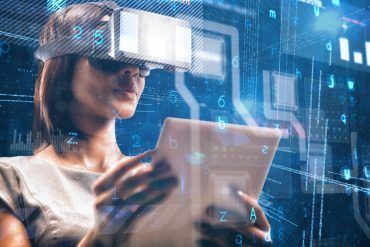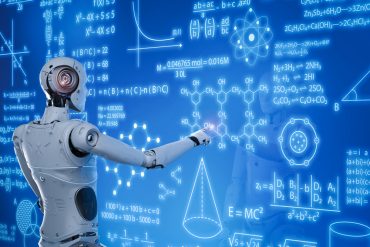
A smart approach to predictive maintenance for equipment requires human intelligence plus machine learning, which can adapt maintenance needs to different operating environments.
Connected devices are significantly changing the way consumers and businesses interact with products. Today the Internet of Things (IoT) is everywhere and seems to touch everything from smart coffee machines to predictive maintenance for industrial equipment.
To unlock the full value of IoT, users, developers, and decision makers need to access the data from connected products and understand how to use what it reveals to create and deliver new opportunities. The challenge? Most organizations are currently not equipped to handle the large volume of data coming off of these connected devices and are struggling to effectively collect, manage and analyze the data across their IoT ecosystem.
Without the right organizational structure and processes in place, the tremendous insight that can be gleaned from all of this data is at risk. This leaves organizations missing a critical opportunity to gain competitive advantage due to the volumes of product performance and usage data that they are not fully using and leveraging.
The IoT data challenge is being felt across many industries including industrial equipment manufacturing where there are big opportunities to use the data from connected devices to improve equipment quality, uptime, and the overall service experience. According to an Arc Advisory Group report, using IoT analytics “for condition monitoring and predictive maintenance can help ensure high uptime for critical assets — particularly among those 82 percent of assets having a random failure pattern.”
Given the potential near- and long-term value of IoT analytics, the imperative is mounting for businesses to devise a strategy to make sense of endless and massive amounts of data. Organizations are quickly adopting initiatives to change from reactive to proactive mode to get the necessary systems and organizational structure in place to efficiently manage and analyze the data. But as systems are put into place to analyze the data, the bigger obstacle comes from the data analysis. Analyzing data has always presented challenges and the typical methods of data analysis are not equipped to handle the advanced and sheer volume of data coming from device sensors.
In most cases, traditional data analysis using operational reports or dashboards, relies on humans to identify interesting points of information. This is critical to an organization’s decision-making process but this new deluge of IoT data compromises its effectiveness. By relying solely on human interpretation of the IoT data story—which becomes less and less effective with more data, analysts risk telling the wrong story, or one that doesn’t take into account all the facts.
To navigate the data challenges, organizations must rethink their analytics strategy and bring together human intelligence and machine intelligence. When the two work together, it is easier to tackle the high velocity and volume of IoT data and create a more comprehensive view that takes into account a bigger picture of what is happening with a particular device, including why events occurred and what is expected to happen in the future. As a result, more informed conclusions can be drawn from the data and better decisions can be made that can often reveal new opportunities, maximize existing ones, or minimize potential risk.
Attaining machine-driven intelligence requires machine learning, an advanced approach to analytics, which delivers an assisted and automated way for data analysts and decision makers to discover patterns of data that are not obvious. This enables a more micro approach to predictive intelligence, which becomes more critical when data volume increases. It reveals patterns and actionable insights hidden within massive data sets and provides an intelligent, predictive layer with advanced analytics. With this approach to creating a data narrative, it changes the way that an organization’s decision makers execute their analytical initiatives by leaning on the computer’s ability to continuously adapt, discover hidden connections in massive datasets, and deliver reliable, accurate, predictive intelligence.
In the industrial equipment industry for example, both the equipment operators and service company could save a lot of money and resources if they could predict what equipment or parts need to be maintained to avoid downtime, or could identify the unique needs of a particular piece of equipment at a specific job site.
Machine Learning
How does machine learning provide more data insight than what you can learn from the remote monitoring of equipment? Think about it this way. Many of us go for a run to relieve stress but the way you prepare for a run in Arizona is vastly different from the way you would dress and gear up for a run in chilly Alaska. With industrial equipment, there are a lot of predictive maintenance approaches to maintain equipment parts, but the challenge arises when a piece of machinery is operating in highly differentiated environments. Similar to how we would prepare for a run in different climates, a bulldozer in Arizona is going to act and require maintenance a lot differently than say a bulldozer in Alaska. Different temperatures, different operating environments—all those things should be factored in when looking at the data and coming up with accurate predictions of when to service and replace parts. Machine learning can provide this insight along with how long it takes to service the product, how much it costs to service it, and the combinations of factors that will lead to equipment failure such as the operating environment.
With a more holistic, micro view into the data coming from connected equipment, you can create a more comprehensive data story and uncover new ways to accurately and confidently lower the cost of producing and servicing products, generate new revenue opportunities, and sell more products and services at lower price points.
IoT data unveils a product’s bigger story by opening up a world of new ways to view and analyze data. By connecting human intelligence with machine-based intelligence as part of your IoT analytics strategy and data infrastructure, you can minimize the complexity of building this story and gain value easier and more quickly. As the number of connected devices continues to grow, this should be an essential component of an organization’s advanced analytics initiatives in order to better solve problems and capitalize on the revenue potential of the IoT.
Want more? Check out our most-read content:
Research from Gartner: Real-Time Analytics with the Internet of Things
Goodbye Don Draper, Hello Big Data: An EMA Report on Modern Analytics
Becoming an ‘Always On’ Smart Business
Frontiers in Artificial Intelligence for the IoT: White Paper
Liked this article? Share it with your colleagues using the links below!





























